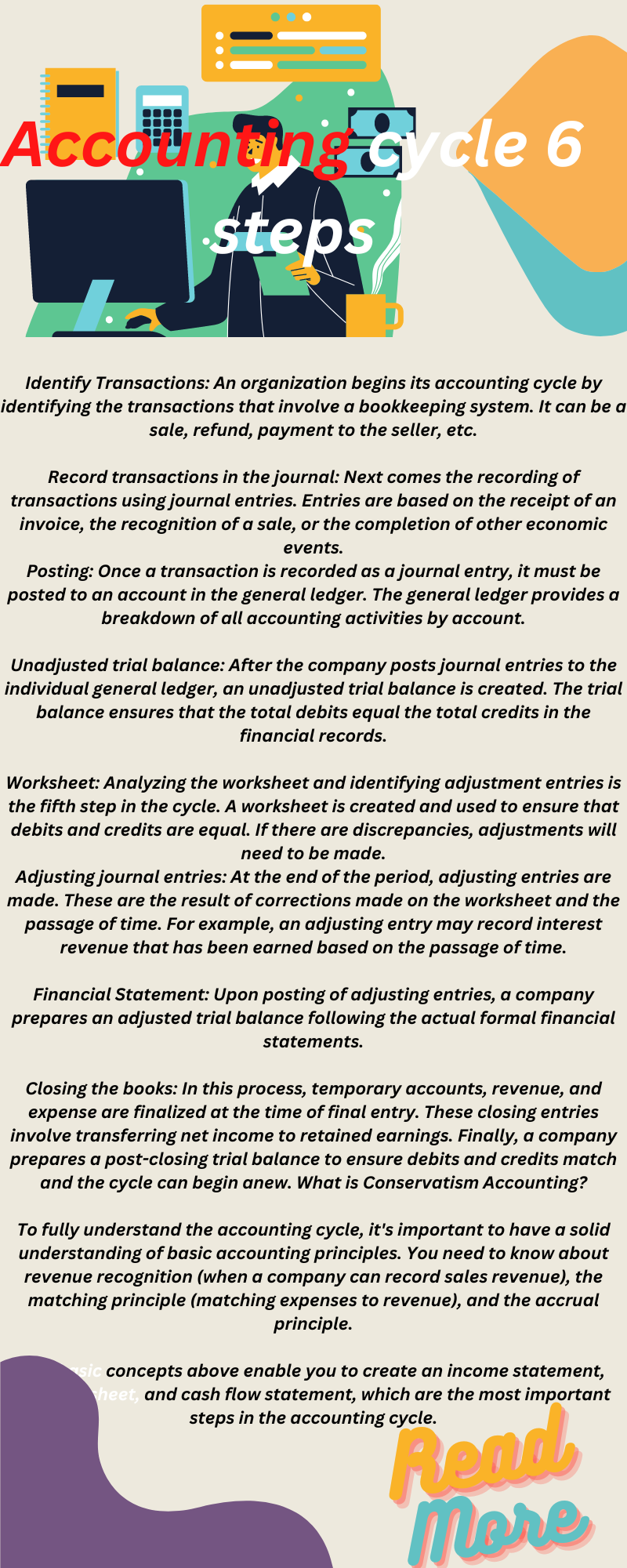What Are Accounting Cycle And It's 6 Steps
If you want to know about the what is accounting cycle, the importance of the accounting cycle, and all other information then you should check our post till the end.
what is the accounting cycle?
The accounting cycle is the overall process of recording and processing all of a company's financial transactions, from when the transaction occurs, through its representation on the financial statements, to when the accounts are closed.
One of the main duties of a bookkeeper is to keep track of the complete accounting cycle from beginning to end. The cycle repeats itself every fiscal year for as long as a company remains in business.
The accounting cycle includes all accounts, journal entries, T accounts, debits and credits, and adjusting entries in one full cycle.
How does the accounting cycle work?
An accounts receivable or accounts payable team member, full-cycle bookkeeper, or accountant records financial transactions, closes the books for the accounting period, and prepares financial statements, following internal control rules and separation of duties. Considering the roles for.
Accounting cycle 6 steps
Check out the 6 steps of the accounting cycle :
 |
| Accounting cycle 6 steps |
Identify Transactions: An organization begins its accounting cycle by identifying the transactions that involve a bookkeeping system. It can be a sale, refund, payment to the seller, etc.
Record transactions in the journal: Next comes the recording of transactions using journal entries. Entries are based on the receipt of an invoice, the recognition of a sale, or the completion of other economic events.
Posting: Once a transaction is recorded as a journal entry, it must be posted to an account in the general ledger. The general ledger provides a breakdown of all accounting activities by account.
Unadjusted trial balance: After the company posts journal entries to the individual general ledger, an unadjusted trial balance is created. The trial balance ensures that the total debits equal the total credits in the financial records.
Worksheet: Analyzing the worksheet and identifying adjustment entries is the fifth step in the cycle. A worksheet is created and used to ensure that debits and credits are equal. If there are discrepancies, adjustments will need to be made.
Adjusting journal entries: At the end of the period, adjusting entries are made. These are the result of corrections made on the worksheet and the passage of time. For example, an adjusting entry may record interest revenue that has been earned based on the passage of time.
Financial Statement: Upon posting of adjusting entries, a company prepares an adjusted trial balance following the actual formal financial statements.
Closing the books: In this process, temporary accounts, revenue, and expense are finalized at the time of final entry. These closing entries involve transferring net income to retained earnings. Finally, a company prepares a post-closing trial balance to ensure debits and credits match and the cycle can begin anew. What is Conservatism Accounting?
To fully understand the accounting cycle, it's important to have a solid understanding of basic accounting principles. You need to know about revenue recognition (when a company can record sales revenue), the matching principle (matching expenses to revenue), and the accrual principle.
The basic concepts above enable you to create an income statement, balance sheet, and cash flow statement, which are the most important steps in the accounting cycle.
Conclusion
Here in this post, we discuss the accounting cycle 6 steps, the accounting cycle pdf, and the accounting cycle 5 steps if you want to know about the accounting cycle then for more details you should check our article till the end.



.png)
.png)
.png)
0 Comments